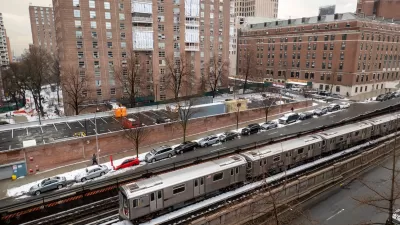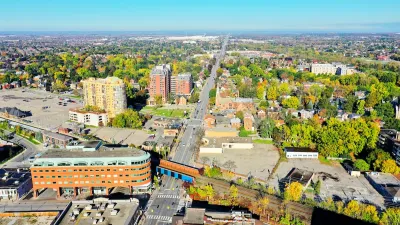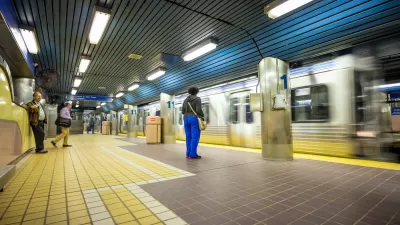While recent federal legislation allocates billions to transit projects, local leaders face difficult choices as they struggle to match federal funds while ridership remains below pre-pandemic numbers.

The federal Infrastructure Investment and Jobs Act (IIJA) will pump billions of dollars into transit projects across the nation, writes Thomas Day in Governing, but local governments will have to develop strategies to meet federal requirements as they reshape their systems around post-pandemic travel patterns.
“Difficult choices will need to be made now — think new tax increment financing districts, congestion pricing or repurposing of existing public funds — or IIJA grant dollars will be left on the table,” Day says. “Unlike the COVID-19 relief bills, which included funding to support operational expenses, much of the IIJA’s public transit funds must be spent on capital projects.” Accordingly, “For IIJA to revive and sustain public transit, local governments and transit agencies need to make an effective push to recover lost revenue, then act on a bold vision of post-COVID-19 cities.”
“Transit-oriented development, long a fascination among urban planners, may now provide a solution for mayors who have seen the lifeblood sucked out of downtowns as professional service workers continue to work from home,” posits Day. “By building housing closer to transit, protecting low-income residents and public housing, increasing urban density and providing easier access to downtown civic amenities, cities could strengthen the magnetic pull of urban centers even if work-from-home trends continue.” This could help draw riders back to public transit and counter the hollowing out of downtowns by introducing a wider variety of uses in downtown cores, as well as more convenient ways to access them.
FULL STORY: Federal Transit Billions Are Coming, but There’s a Catch

Trump Administration Could Effectively End Housing Voucher Program
Federal officials are eyeing major cuts to the Section 8 program that helps millions of low-income households pay rent.

Planetizen Federal Action Tracker
A weekly monitor of how Trump’s orders and actions are impacting planners and planning in America.

The 120 Year Old Tiny Home Villages That Sheltered San Francisco’s Earthquake Refugees
More than a century ago, San Francisco mobilized to house thousands of residents displaced by the 1906 earthquake. Could their strategy offer a model for the present?

Alabama School Forestry Initiative Brings Trees to Schoolyards
Trees can improve physical and mental health for students and commnity members.

NYC Outdoor Dining Could Get a Re-Do
The city council is considering making the al fresco dining program year-round to address cost concerns from small businesses.

HSR Reaches Key Settlement in Northern California City
The state’s high-speed rail authority reached an agreement with Millbrae, a key city on the train’s proposed route to San Francisco.
Urban Design for Planners 1: Software Tools
This six-course series explores essential urban design concepts using open source software and equips planners with the tools they need to participate fully in the urban design process.
Planning for Universal Design
Learn the tools for implementing Universal Design in planning regulations.
Ada County Highway District
Clanton & Associates, Inc.
Jessamine County Fiscal Court
Institute for Housing and Urban Development Studies (IHS)
City of Grandview
Harvard GSD Executive Education
Toledo-Lucas County Plan Commissions
Salt Lake City
NYU Wagner Graduate School of Public Service





























